Potřebujeme váš souhlas k využití jednotlivých dat, aby se vám mimo jiné mohly ukazovat informace týkající se vašich zájmů. Souhlas udělíte kliknutím na tlačítko „OK“.
ASTM D1894-14
Standard Test Method for Static and Kinetic Coefficients of Friction of Plastic Film and Sheeting (Withdrawn 2023)
Automaticky přeložený název:
Standardní zkušební metoda pro statické a kinetické koeficienty tření plastové fólie a pažení
NORMA vydána dne 1.3.2014
Informace o normě:
Označení normy: ASTM D1894-14
Poznámka: NEPLATNÁ
Datum vydání normy: 1.3.2014
Kód zboží: NS-18690
Počet stran: 7
Přibližná hmotnost: 21 g (0.05 liber)
Země: Americká technická norma
Kategorie: Technické normy ASTM
Kategorie - podobné normy:
Anotace textu normy ASTM D1894-14 :
Keywords:
friction, kinetic coefficient of friction, plastic film, plastic sheeting, slip, static coefficient of friction, ICS Number Code 83.140.10 (Films and sheets)
Doplňující informace
| Significance and Use | ||||||||||||||||||
|
4.1 Measurements of frictional properties may be made on a film or sheeting specimen when sliding over itself or over another substance. The coefficients of friction are related to the slip properties of plastic films that are of wide interest in packaging applications. These methods yield empirical data for control purposes in film production. Correlation of test results with actual performance can usually be established. 4.1.1 This test method includes testing at temperatures other than 23°C by heating only the plane while the sled is at ambient temperature. 4.2 Slip properties are generated by additives in some plastic films, for example, polyethylene. These additives have varying degrees of compatibility with the film matrix. Some of them bloom, or exude to the surface, lubricating it and making it more slippery. Because this blooming action may not always be uniform on all areas of the film surface, values from these tests may be limited in reproducibility. 4.3 The frictional properties of plastic film and sheeting may be dependent on the uniformity of the rate of motion between the two surfaces. Care should be exercised to ensure that the rate of motion of the equipment is as carefully controlled as possible. 4.4 Data obtained by these procedures may be extremely sensitive to the age of the film or sheet and the condition of the surfaces. The blooming action of many slip additives is time-dependent. For this reason, it is sometimes meaningless to compare slip and friction properties of films or sheets produced at different times, unless it is desired to study this effect. 4.5 Frictional and slip properties of plastic film and sheeting are based on measurements of surface phenomena. Where products have been made by different processes, or even on different machines by the same process, their surfaces may be dependent on the equipment or its running conditions. Such factors must be weighed in evaluating data from these methods. 4.6 The measurement of the static coefficient of friction is highly dependent on the rate of loading and on the amount of blocking occurring between the loaded sled and the platform due to variation in time before motion is initiated. 4.7 Care should be exercised to make certain that the speed of response of the recorder, either electronic or mechanical, is not exceeded. 4.8 For many materials, there may be a specification that requires the use of this test method, but with some procedural modifications that take precedence when adhering to the specification. Therefore, it is advisable to refer to that material specification before using this test method. Table 1 of Classification System D4000 lists the ASTM materials standards that currently exist. |
||||||||||||||||||
| 1. Scope | ||||||||||||||||||
|
1.1 This test method covers determination of the coefficients of starting and sliding friction of plastic film and sheeting when sliding over itself or other substances at specified test conditions. The procedure permits the use of a stationary sled with a moving plane, or a moving sled with a stationary plane. Both procedures yield the same coefficients of friction values for a given sample. 1.2 Test data obtained by this test
method is relevant and appropriate for use in engineering
design.
1.2.1 As an option to this test, coefficient of friction may be run at temperatures other than 23°C by heating only the plane while the sled is at ambient temperature. 1.3 The values stated in SI units are to be regarded as standard. The values given in parentheses are for information only. 1.4 This standard does not
purport to address all of the safety concerns, if any, associated
with its use. It is the responsibility of the user of this standard
to establish appropriate safety and health practices and determine
the applicability of regulatory limitations prior to use.
Standard Practice for Use of the Terms
Precision and Bias in ASTM Test Methods Standard Test Method for Measurement of
Web/Roller Friction Characteristics ISO 8295–1995 Available from American
National Standards Institute (ANSI), 25 W. 43rd St., 4th Floor, New
York, NY 10036, http://www.ansi.org. Standard Practice for Conducting an
Interlaboratory Study to Determine the Precision of a Test
Method Standard Classification System for
Specifying Plastic Materials Standard Test Methods for Flexible
Cellular Materials´Slab, Bonded, and Molded Urethane Foams Standard Test Method for Static and
Kinetic Coefficients of Friction of Plastic Film and Sheeting
(Withdrawn 2023) Standard Terminology Relating to
Plastics Standard Practice for Conditioning
Plastics for Testing |
Podobné normy:
Historická
1.2.2011
Historická
15.4.2009
Historická
1.4.2011
Historická
1.4.2013
Historická
1.4.2010
Historická
1.2.2011
Odebírejte informace o nově vydaných normách ZDARMA:
Chcete pravidelně odebírat informace o nově vycházejících normách z celého světa a to zcela zdarma?
Přihlašte se k odběru. Vše je velice jednoduché a absolutně ZDARMA.
Na výběr máte vydavatele z celého světa.


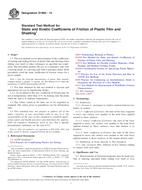
 ASTM D6585-11
ASTM D6585-11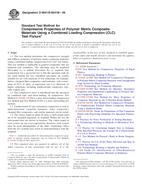 ASTM D6641/D6641M-09..
ASTM D6641/D6641M-09..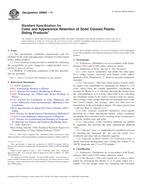 ASTM D6864-11
ASTM D6864-11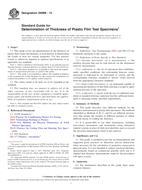 ASTM D6988-13
ASTM D6988-13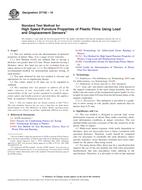 ASTM D7192-10
ASTM D7192-10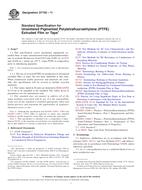 ASTM D7193-11
ASTM D7193-11
 Cookies
Cookies
